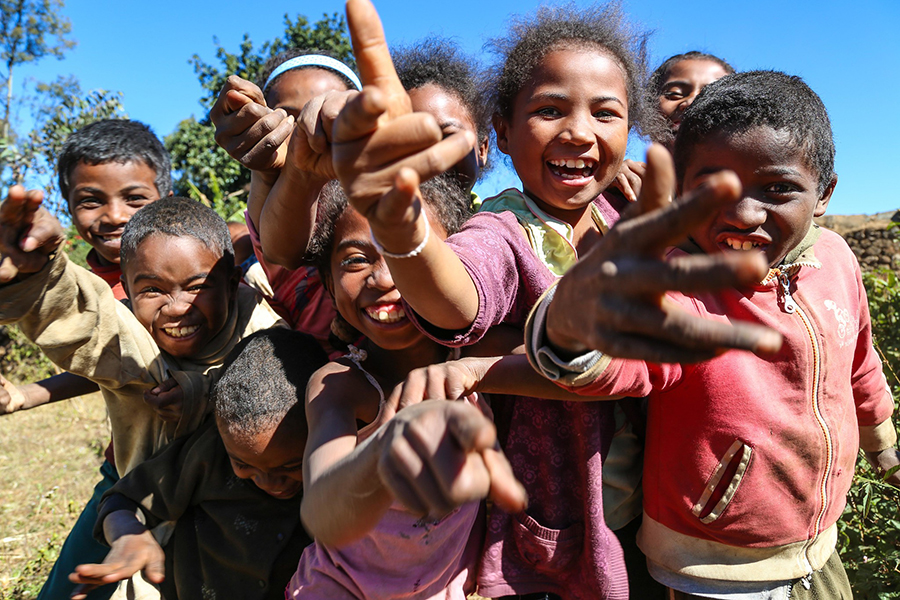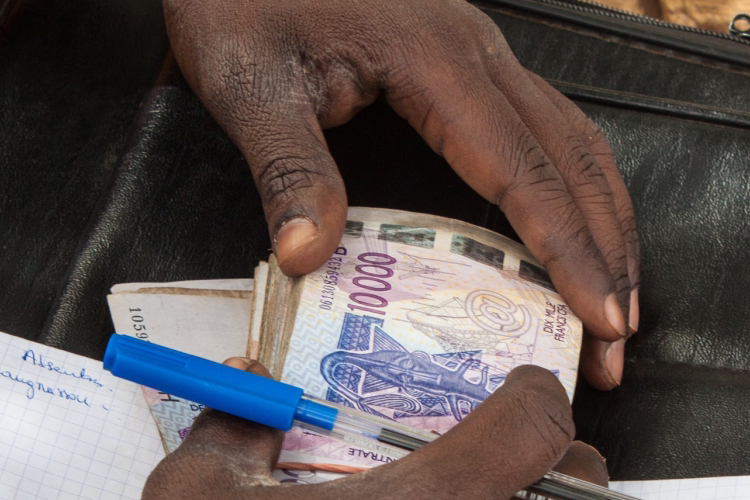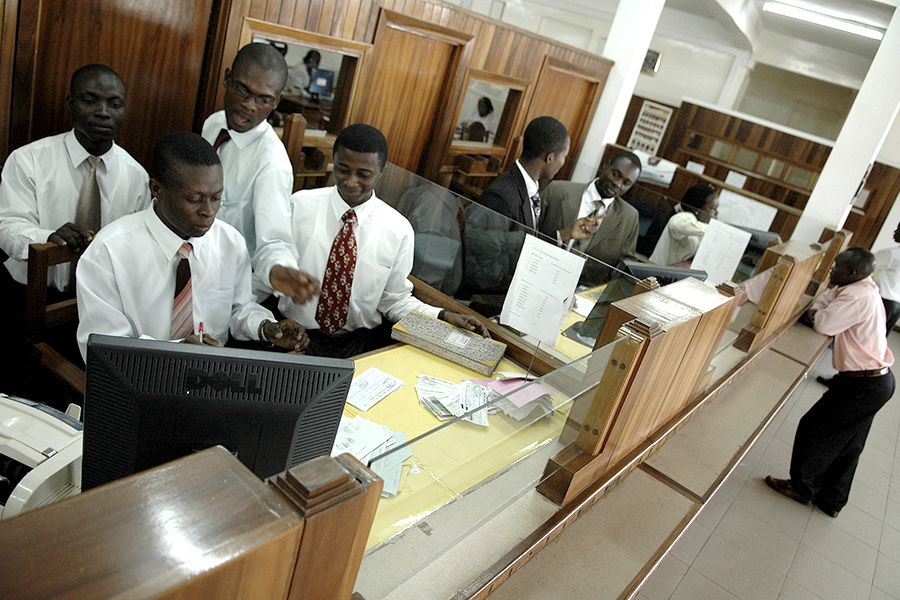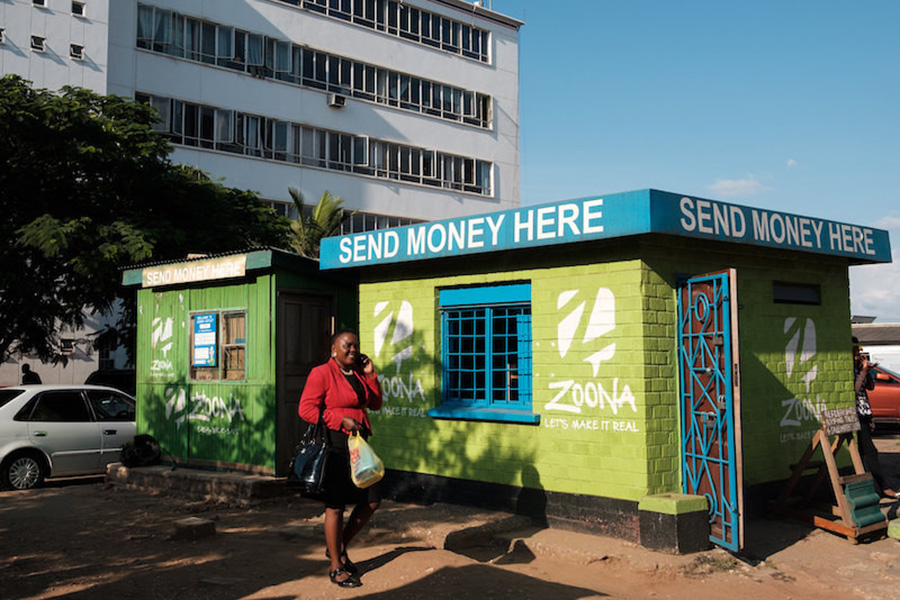Since March 2020, governments have spent $16 trillion providing fiscal support amid the pandemic. Deficits are the highest they have been since World War II. This was absolutely necessary — IMF research indicates that if policymakers had not acted, last year’s recession, which was the worst peacetime recession since the Great Depression, would have been three times worse. The world lost $15 trillion in output as a result of COVID-19. The same energy that is being put into vaccination and plans for recovery spending also needs to be put into growth measures to make up for this lost output.
Finance
We celebrate the sacrifice of migrant workers, who support their families and communities of origin through the money they send back home, particularly in these times of crisis. Over 200 million migrants defied predictions and continued to send money to their countries of origin throughout the pandemic.
Remittance flows remained resilient in 2020, registering a smaller decline than previously projected. Remittance flows to low- and middle-income countries reached $540 billion in 2020, just 1.6 percent below the 2019 total of $548 billion, according to the latest World Bank’s Migration and Development Brief. The decline in 2020 was smaller than the one during the 2009 global financial crisis, mostly due to the fiscal stimulus that resulted in better-than-expected economic conditions in host countries.
Bold new mechanisms are urgently needed to help low- and middle-income countries address crippling debt, sharply worsened by the COVID-19 pandemic, threatening vital investment to tackle poverty and climate change for years to come, the United Nations Development Programme (UNDP) says in a new report. The report, Sovereign Debt Vulnerabilities in Developing Economies, analyses debt vulnerability across 120 low- and middle-income economies to identify which are most at risk. It classifies 72 economies as “vulnerable,” of which 19 are “severely vulnerable.” Based on measures of sustainable debt thresholds and ratios, it concludes that debt vulnerabilities for these countries will likely remain elevated for years and not return to pre-pandemic levels before 2024-2025.
The 2021 ECOSOC FfD Forum, on 12 to 15 April 2021, will provide an inclusive platform to advance an action-oriented dialogue on financing the COVID-19 recovery and sustainable development on the path to 2030. It will be geared towards building momentum for urgent global action to tackle challenges to the achievement of the Addis Ababa Action Agenda across all its seven action areas, in the context of COVID-19 and beyond. The event will bring together representatives of government and international organizations, civil society, the business sector and local authorities.
Since the onset of the COVID-19 pandemic, the world has been teetering on the brink of a global debt crisis. One year on from the Secretary-General’s policy brief on debt, he is launching a second policy brief, entitled Liquidity and Debt Solutions to Invest in the SDGs: The Time to Act is Now. The brief provides an overview of the still unfolding crisis, steps taken to date, and the additional measures that are needed. It calls for the creation of a new debt architecture, based on transparency, sustainability, responsible borrowing and lending, and fair burden sharing. A high-level virtual meeting underscores the urgency of this initiative.
The crisis has hit small and medium enterprises especially hard, causing massive job losses and other economic scars. Among these—less noticeable, but also serious—is rising market power among dominant firms as they emerge even stronger while smaller rivals fall away.
Today’s world is characterized by a dual monetary system, involving privately-issued money—by banks of all types, telecom companies, or specialized payment providers—built upon a foundation of publicly-issued money—by central banks. While not perfect, this system offers significant advantages, including: innovation and product diversity, mostly provided by the private sector, and stability and efficiency, ensured by the public sector.
Global uncertainty reached unprecedented levels at the beginning of the COVID-19 outbreak and remains elevated. The IMF World Uncertainty Index—a quarterly measure of global economic and policy uncertainty covering 143 countries—shows that although uncertainty has come down by about 60 percent from the peak observed at the onset of the COVID-19 pandemic, it remains about 50 percent above its historical average. Uncertainty is measured by the frequency that the word “uncertainty” is mentioned in the reports in proximity to a word related to the respective systemic-economy country.
The currencies held by central banks as foreign exchange reserves have remained largely steady over decades. Changes of these holdings can be described as glacial in pace. But geopolitical shifts and technological revolutions are reshaping the global economy and the international use of currencies. These forces, and the fallout from the COVID-19 pandemic, could further accelerate the transformations in the reserve holdings of central banks. A new IMF staff paper analyses the composition and drivers of central banks’ reserve currency holdings over recent decades.
During periods of financial insecurity, households often focus on immediate needs. And policymakers are often guided by short-term political cycles. Yet, achieving sustainable development — eradicating poverty, reducing inequality and combating climate change — requires a long-term perspective. Development banks can help with Sustainable Development Goal-related investments. The United Nations recognizes the significant role multilateral development banks play in financing sustainable development and providing know-how, therefore designates 4 December as the International Day of Banks.
As the COVID-19 pandemic and economic crisis continues to spread, the amount of money migrant workers send home is projected to decline 14 percent by 2021 compared to the pre COVID-19 levels in 2019, according to the latest estimates published in the World Bank’s Migration and Development Brief. The foremost factors driving the decline in remittances include weak economic growth and employment levels in migrant-hosting countries, weak oil prices; and depreciation of the currencies of remittance-source countries against the US dollar.
With many still unemployed, small businesses struggling, and 80‑90 million people likely to fall into extreme poverty in 2020 as a result of the pandemic, it is too early for governments to remove the exceptional support. Yet many countries need to do more with less, given increasingly tight budget constraints. The IMF October 2020 Fiscal Monitor examines countries’ experiences managing the crisis and discusses what governments can do to save lives, reduce the impact of the recession, and revive growth and job creation.
A mineral tracking system designed by UNCTAD and the Zambian government makes it easier to detect illicit trade practices that drain billions of dollars each year from the copper-rich nation and its people. The government recovered about $1 million in unpaid export dues from mining companies just one year after piloting the system in 2016. In addition to tracking copper and other minerals, the system allows mining companies to submit their monthly mineral production reports electronically instead of travelling to the capital Lusaka to submit them in person.
COVID-19 has had an oversized negative impact on migrant workers. Perhaps surprisingly, despite the bleak experience for foreign overseas workers during the pandemic, the effect on remittances—the flow of money they send back home—has, in many cases, proven resilient. But that trend may yet be upended. The predicament of migrant workers over the last few months has highlighted the pressing need—now greater than ever—to support them and their families back home. IMF offers some suggestions.















